|
Photos for the group Exhibition "The Power of Symbols"
|
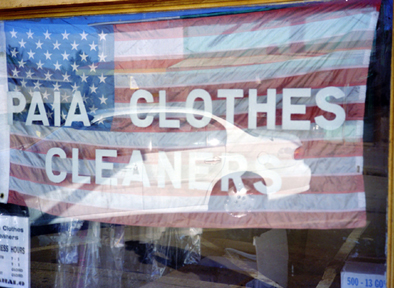 |
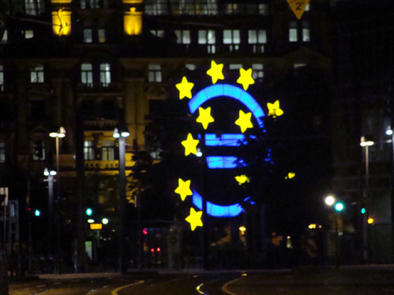 |
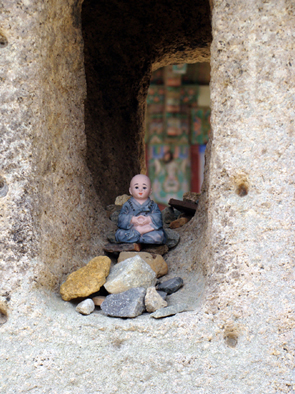 |
|
Paia, Maui, Hawaii, U.S., 1997. Paia originally was a town of Japanese immigrant laborers in the sugar-cane fields. Two important symbols of American life can be seen in the photo. The flag displayed in the showcase of a cleaner and the car reflected in the glass of the window.
アメリカ合衆国、ハワイ州、マウイ島、パイア、1997年。パイアは明治時代にサトウキビの畑で働いた日本人の出稼ぎ者の集落としてスタートした。クリーニングのショーウィンドーに掛かっているアメリカの国旗。グラスに映っている車。アメリカ合衆国の日常生活における愛国心と自由の象徴。 |
Frankfurt, Germany, place in front of the European Central Bank, 2008. The several meters high statue of the Euro symbol erected in front of the European Central bank is a symbol for the unity of the European Union, the pride of the European Central Bank, and the affluence of Europe. Actually, the place has a rather ugly design, it only becomes a bit beautiful when taken at night from the back.
ドイツ、フランクフルト、欧州中央銀行前の広場、2008年。ユーロのシンボル。お金自体は様々な意味で象徴であるが、欧州中央銀行の前に建てられた4メートルの高さのユーロ・シンボルの彫像は欧州連合の統合、中央銀行の誇り、ヨーロッパの豊かさなどの象徴だ。実際には、かなり醜い彫像だ。夜だけには、少し綺麗な雰囲気になる。 |
Beomosa (Pomosa) Temple, Pusan, Korea, 2008. A small plastic Buddha statue placed inside a stone lantern. There exist many religious rites and customs throughout the world for asking favors from the other-worldly powers. Religion is full of symbols and symbolic actions.
韓国、釜山、梵漁寺、2008年。石灯籠に置いたプラスチックの仏像。人間の願いを満たすために、様々な宗教的な儀式と習慣が存在する。それによって、宗教においてシンボルとシンボリックな行為がいっぱいある。 |
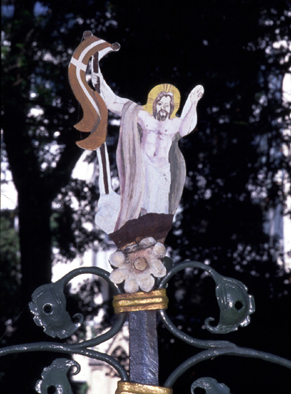 |
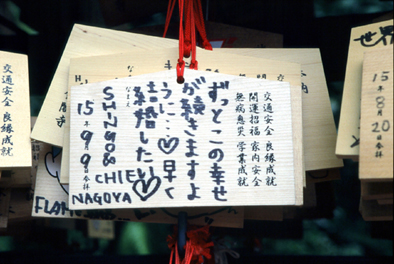 |
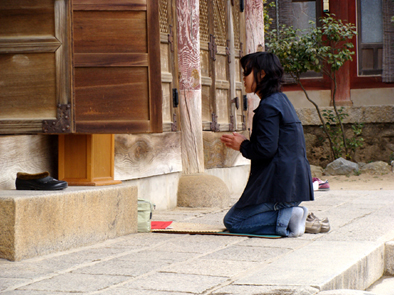 |
|
Old Cemetery, Muenchen, Germany, 2003. A statue of Jesus on the top of the cross of a child grave. Jesus is the protector of children not only in this world, but in the other world too.
ドイツ、ミュンヒエン、旧墓地、2003年。子供の墓の十字につけたイエス像。イエスは子供をこの世のみならず、あの世でも保護する願い。 |
Kinkaku-ji, Kyoto, Japan, 2003. Ema - wooden plaques on which worshippers write their wishes - can be seen at any Shinto shrine or Buddhist temple in Japan. They are the most widely used means to ask this-worldly benefits from the Gods and Buddhas.
日本、京都、金閣寺、2003年。絵馬。神社のも寺にも見られる。神仏に現世利益を頼む。 |
Beomosa (Pomosa) Temple, Pusan, Korea, 2008. Prayer, religiosity.
韓国、釜山、梵漁寺、2008年。祈り。宗教心。 |
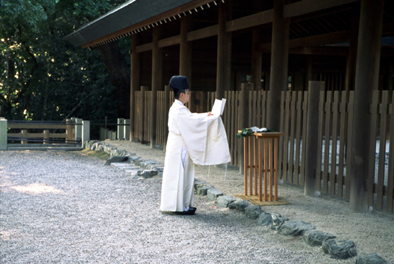 |
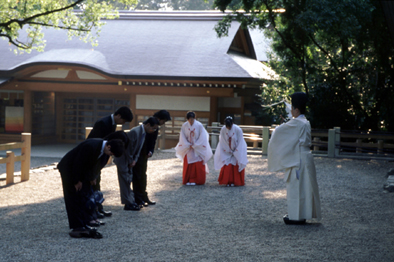 |
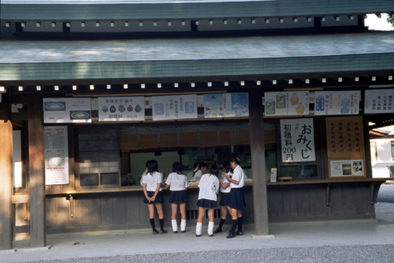 |
|
Atsuta Jingu, Nagoya, Japan 2003. Ceremony to ask for the fulfillment of the wishes of a company for the new business year.
日本、名古屋、熱田神宮、2003年。ある会社が持つ願いを満たすための儀式。 |
Atsuta Jingu, Nagoya, Japan 2003. Middle-school students buy amulets.
日本、名古屋、熱田神宮、2003年。中学生がお守りを購入する。 |
|
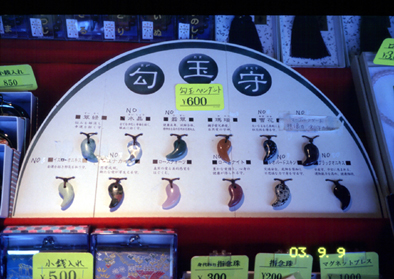 |
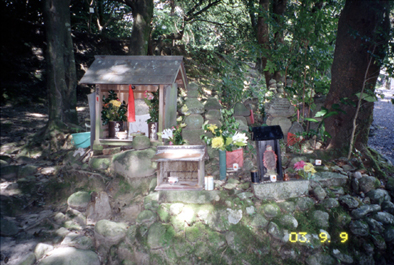 |
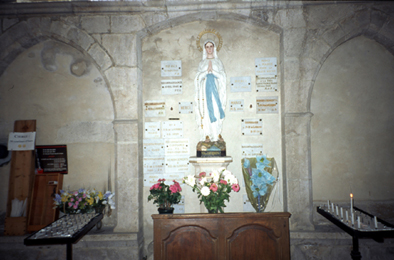 |
|
Todai-ji, Nara, Japan, 2003. Amulets for various occasions (good health, protection in traffic, protection in pregnancy, success in school etc.) in the form of Magatama, which are sold at the temple.
|
Ueno Park, Iga, Japan, 2003. Small Shrine honoring local deities.
日本、伊賀市、上野公園、2003年。祠。 |
Ferrieres-en-Gatinais, France, 2007. A statue of Virgin Mary surrounded by ex voto for pilgrimages to Lourdes. In Catholicism saints are the main providers of this-worldly benefits.
フランス、フェリエル・アン・ガティネ、2007年。聖マリア像。像の周りに、ルルド巡礼で受けた現世利益を感謝する奉献物が壁につけてある。カトリック教会において、聖人に現世利益を頼む。 |
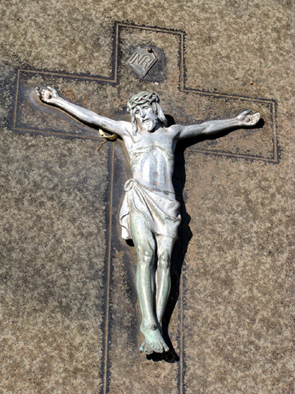 |
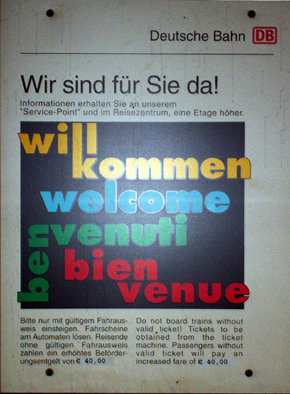 |
 |
|
New Cemetery, Fritzlar, Germany, 2008. A statue of Christ on a grave. A symbol of faith and a symbol of eternal life.
ドイツ、フリツラール、新墓地、2008年。墓の上のキリスト像。信仰のシンボル。永遠の生活のシンボル。 |
Local trains station, Frankfurt airport, Germany, 2005. A sign announcing penalties for fare dodgers.
ドイツ、フランクフルト空港・近郊線駅、2005年。不正乗車罰金の案内看板。「ようこそ」の建前と本音。 |
English Garden, Muenchen, 2008. Surfing at a place where it is forbidden. An adventure defying danger. Pride in one’s capabilities. Defiance of authority.
ドイツ、ミュンヒエン、イギリス庭園、2008年。禁止された場所でサーフィン。危険を無視する冒険。自分の能力と体力に対する誇り。そして、権力の無視。 |
 |
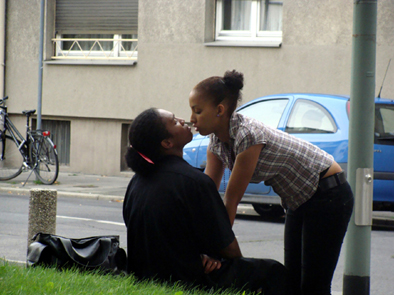 |
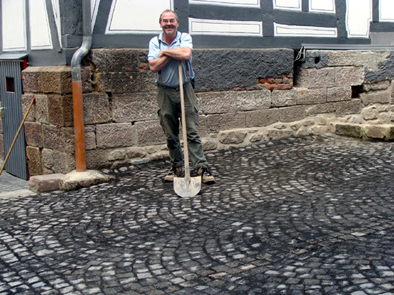 |
|
English Garden, Muenchen, 2008. Sign forbidding surfing and swimming. Actually, the small river is only 2 or 3 meters wide with concrete borders and at this place some installations have been built in the river to get air into the water, this leads to magnificent waves, but also dangerous currents. Every year grave accidents occur here. But there is no police to enforce the prohibition. The sign alone frees the city from any responsibilities.
ドイツ、ミュンヒエン、イギリス庭園、2008年。サーフィン禁止の看板。この場所には、川の水に空気を入れる設備があるので、波がすごく、サーフィンがよくできる。しかし、とても危険。毎年酷い事故が起こる。でも、禁止を強化する警察がこない。看板を立てるばかりで、市の賠償責任を避ける。 |
Frankfurt, Germany, 2008. Kiss. Love and romance.
ドイツ、フランクフルト、2008年。口付け。愛情と恋愛。 |
Fritzlar, Germany, 2008. Pleasure about having finished one’s work. Diligence and satisfaction with life.
ドイツ、フリツラール、2008年。仕事をよく片付いた喜び。勤勉と生活満足。 |
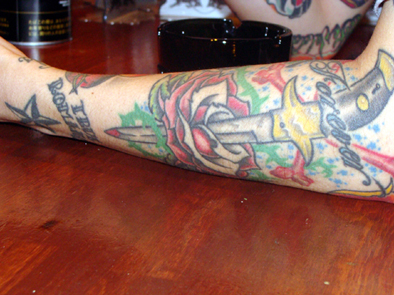 |
“The Power of Symbols” was a group exhibition held at Noritake Garden Gallery in Nagoya from March 24 to March 29, 2009. It included ceramic works by Albert Sussler, paintings by Joe Sichi, woodblock prints by Francis Marie, and my photos. Heeding to the theme of the exhibition was not an easy task for a street photographer, so I included a lot of photos, which I normally don’t show in my exhibitions.
“The Power of Symbols” (象徴の力)は、2009年3月24日〜29日に名古屋のノリタケの森ギャラリーに開催されたグループ展でした。この展覧会は、Albert Susslerの焼き物、Joe Sichiの絵画とFrancis Marieの木版画のほかに、私の写真を含んだ。展覧会のテーマに対応することは、路上写真家にとって簡単な課題ではなくて、普段私の展覧会に見せていない作品も展示するようになった。 |
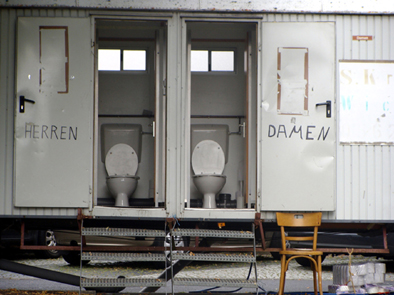 |
|
Nagoya, Japan, 2008. Tattoo.
日本、名古屋、2008年。刺青。 |
Fritzlar, Germany, 2008. A toilet wagon at an out-door festival. Men’s and women’s toilets. No difference. Gender equality?
ドイツ、フリツラー、2008年。野外祭りの臨時便所。便所車両の男性便所と女性便所は、男女平等か? |
|
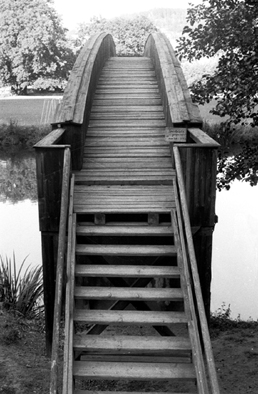 |
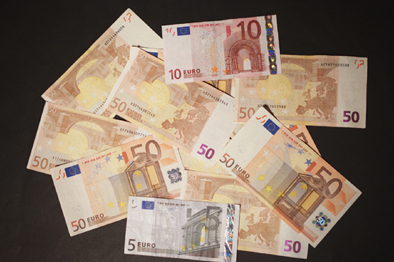 |
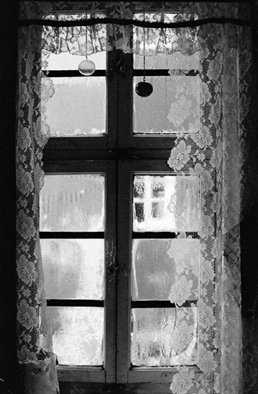 |
|
Marburg, Germany, 1976. Bridge. The bridge is a symbol for human inter-connectedness.
ドイツ、マルブルグ、1976年。橋。橋は、人間の繋がりの象徴。 |
Euros, 2009. Bills itself are a symbol for money and gold. On the Euro bills, one side displays bridges, and the reverse side displays doors or windows. The bridges symbolize the inter-connectedness of the peoples in the European Union, and the windows and doors openness versus each other. There is a story a banker told me in Germany. When handing over Euro bills, what do you put on top? The bridge or the window? Bridges imply connectedness, the money comes back to you (with an interest); the windows imply throwing the money out.
ユーロ、2009年。紙幣自体は金の象徴だ。ユーロの紙幣には、一つの面は橋、逆の面は窓もしくは門を見せる。これは、欧州連合の国々と人間は互いに繋がっており、互いを受けていることの象徴だ。面白い話を聞いた。「他の人にユーロを渡す時に、どちらの面は表であるかは大事。橋は人間の繋がりの網を意味するから、お金が帰ってくる。しかし、窓、または門が表だったら、お金を外に捨てる意味になる。お金が帰ってこない」と。 |
Marburg, Germany, 1978. Window. The window is a symbol for openness towards other people.
ドイツ、マルブルグ、1978年。窓。窓と門は他人に対して開けていることの象徴。 |
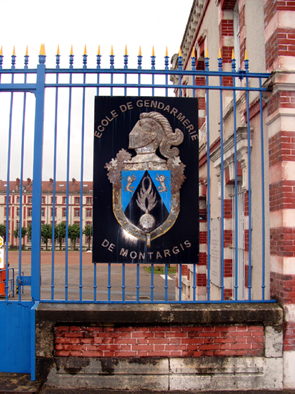 |
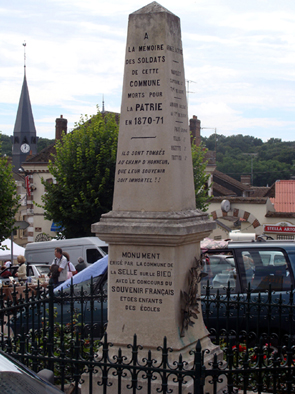 |
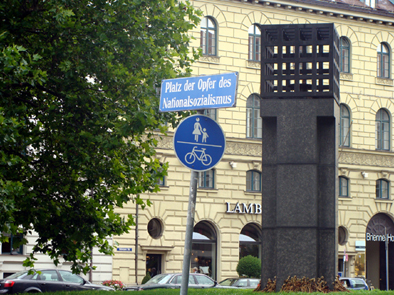 |
|
Montargis, France, 2008. The arms of the school of the Gendarmerie. A symbol of power and battle readiness.
フランス、モンタルジー、2008年。警察学校の紋。権力の象徴。 |
Selle-sur-le-Bied, France, 2008. A monument for the war dead of the community. Monuments erected by state authorities rule public memory. They are not only a symbol of power, but also a symbol for things that the nation should not forget.
フランス、セル・シュル・ル・ビエデ、2008年。戦没者記念碑。国家によって建てられた記念碑は、国家による国民の記憶を統治する。権力のシンボルのみならず、忘れてはいけない事柄のシンボルでもある。 |
Muenchen, Germany, 2008. A monument for the victims of national socialism.
ドイツ、ミュンヒエン、2008年。ナチズム支配犠牲者記念碑。 |
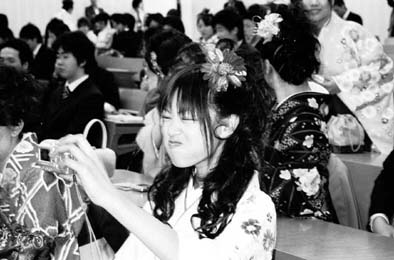 |
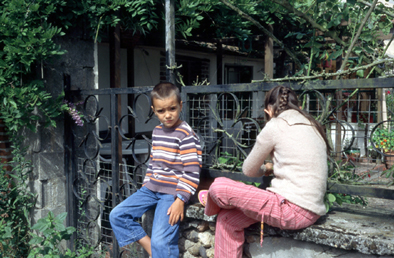 |
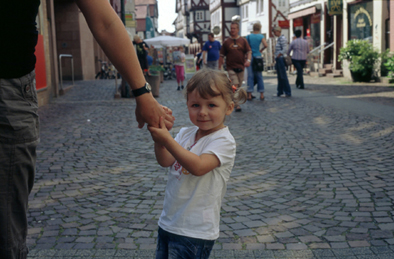 |
|
Chubu University, Kasugai, Japan, 2008. Graduation Ceremony. The graduation ceremony at universities symbolizes the transition into adult life.
日本、春日井市、中部大学、2008年。卒業式。大学の卒業式は社会人・大人への移行の象徴。 |
Selle-sur-le-Bied, France, 2008. Suspicion towards the stranger taking photographs.
フランス、セル・シュル・ル・ビエデ、2008年。よそ者に対する疑い。 |
Fritzlar, Germany, 2008. At the hand of her mother, feeling secure.
ドイツ、フリツラール、2008年。よそ者がいる時に、母の手は安心。 |
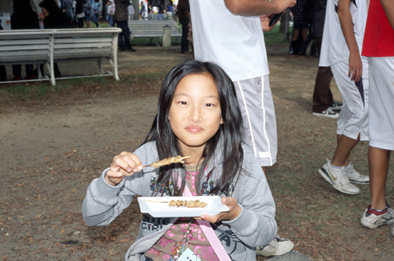 |
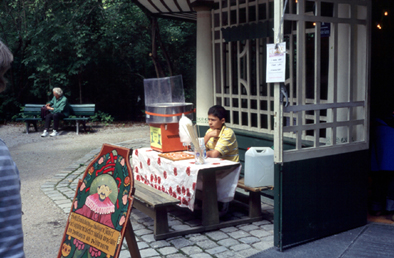 |
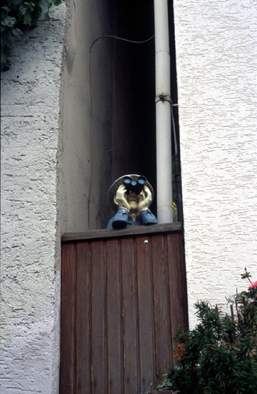 |
|
Chubu University, Kasugai, Japan, 2008. A little girl visiting the University Festival. Pleasure.
日本、春日井市、中部大学、2008年。大学祭を訪れる少女。喜び。 |
English Garden, Muenchen, Germany, 2008. A boy selling cotton candy at a children’s playground. Child labor. The back side of our affluent societies. Loneliness.
ドイツ、ミュンヒエン、イギリス庭園、2008年。子供の遊び場の側に綿菓子を売る少年。児童労働。我らの社会の裏面。寂しさ。 |
Fritzlar, Germany, 2008. An old man peeking at his neighbors. Inquisitiveness? Envy?
ドイツ、フリツラール、2008年。他人の見張り。好奇心か、妬みか? |
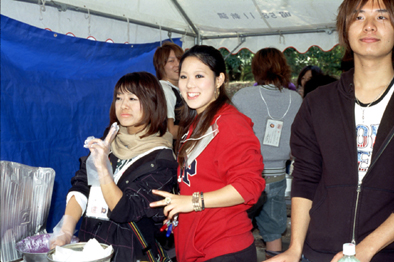 |
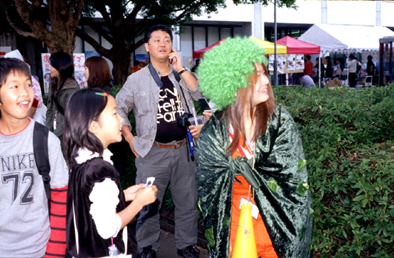 |
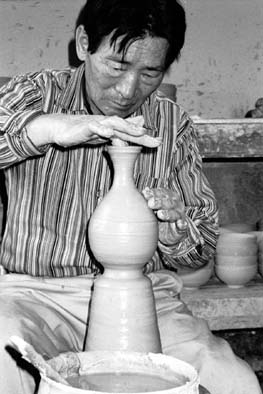 |
|
Chubu University, Kasugai, Japan, 2008. University Festival. One of the important yearly events of the university. Unity of all members of the university and also inter-connection of the university with the larger community.
日本、春日井市、中部大学、2008年。大学祭。大学の重要な年中行事。大学に属する全員の一体、または大学と社会の繋がり。 |
Chubu University, Kasugai, Japan, 2008. University Festival. During the festival the normal rules of behavior do not apply.
日本、春日井市、中部大学、2008年。大学祭。大学の普通の振る舞いからの解放。 |
Gyongju, Korea, 2008. Celadon porcelain craftsman. Pride of the craftsman in his work.
韓国、慶州、2008年。青磁職人。職人の誇り。 |
|
|